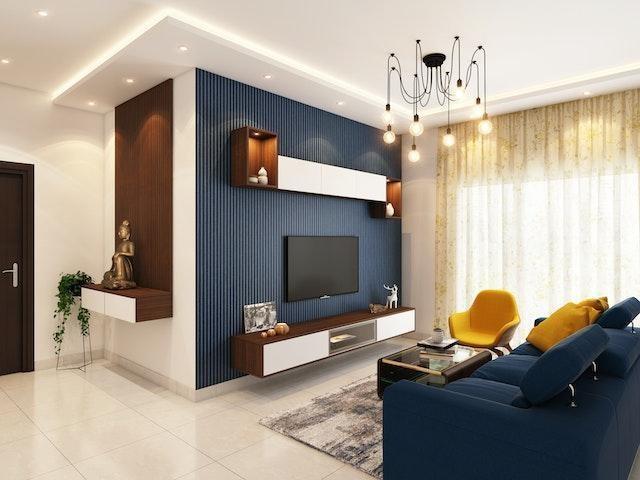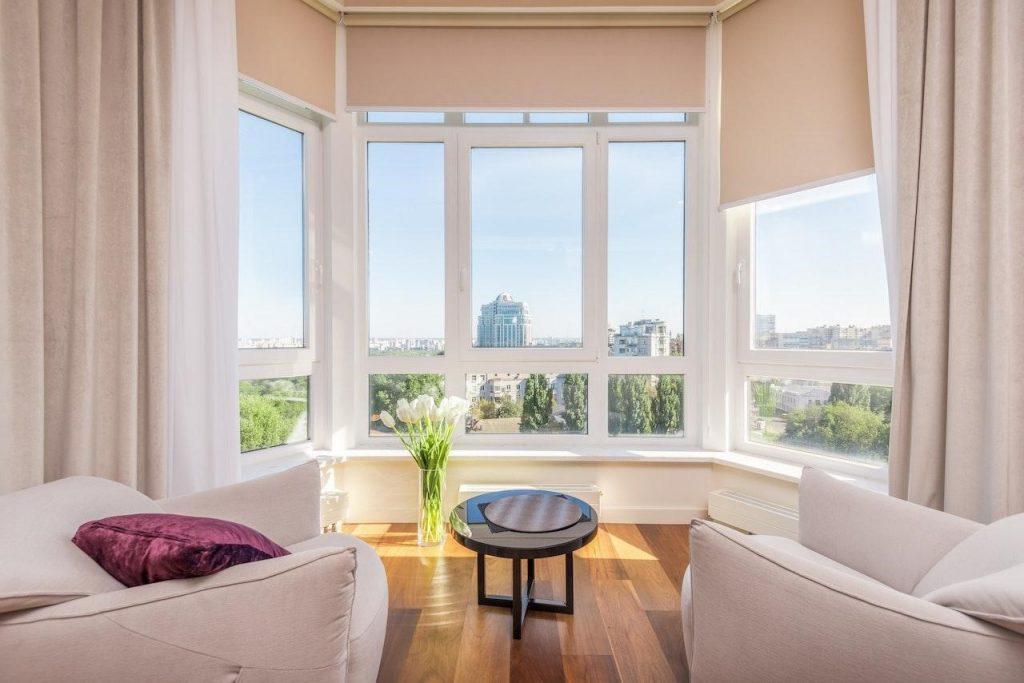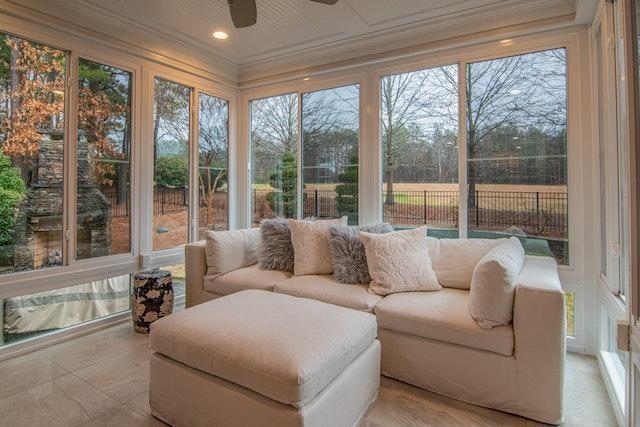A small living room can be cozy and intimate, but it can also feel cramped and cluttered if not designed properly. Fortunately, there are several simple tricks and design strategies that can help you make a small living room look and feel bigger. From choosing the right colors and lighting to selecting furniture that serves multiple purposes, there are many ways to optimize your space and create a comfortable and functional living room.
We will explore some of the most effective techniques for making a small living room look bigger, so you can enjoy your space to the fullest.
A small living room visually gets bigger
Trick the eye into thinking a space is larger than it actually is. Here are some tips on how to make a tiny living room appear larger, ranging from easy tweaks to new additions that will give the room an immediate feeling of space:
- make your color scheme simple
- say yes to multifunctionality
- choose proportionate furniture
- flick on the light
- small living room accessories
Make your color scheme simple
Avoiding an excess of dark or dramatic colors when it comes to modern small living room ideas is essential if you want to make a small area feel bigger. Smaller spaces benefit from lighter tones because they tend to bounce light naturally, making the room appear larger. Alternately, to create a cohesive environment, pair light neutral walls with furniture in a complementary color scheme.
The area will appear optically longer and more spacious if you use the same color throughout in various shades and tones. Contrarily, using excessive colors can visually divide a space, making it appear smaller and disorganized.
The “color drenching” technique utilizes the same color in various ways across your room. This can include having the same color on your woodwork, ceiling, walls, and furniture. This not only has the most impact, but it’s also a simple technique to elongate the appearance of a space.
Say yes to multi-functionality
Choosing furniture that serves multiple purposes is an innovative and practical way to maximize the functionality of a small living room. In a limited space, every piece of furniture counts. Therefore, you should choose furniture that can save you space and serve more than one function.
For example, a storage ottoman can serve as a coffee table, footrest, and extra seating while providing storage space for blankets, magazines, and other items. This saves valuable floor space and eliminates the need for separate pieces of furniture, reducing clutter and making the room feel more open.
Nesting tables, on the other hand, can be stacked together when not in use, taking up minimal floor space, and pulled out when you need extra tabletop space for drinks or snacks.

Overall, choosing furniture that serves multiple purposes allows you to create a cozy and functional living room that meets all your needs without sacrificing style or comfort.
Choose proportionate furniture
Choosing furniture that fits the space well is a must in a small living room. Avoid high-backed sofa designs and large, clunky coffee tables in favor of low-level sofas, armless modular furniture, or smaller side tables.
This does not mean you should be afraid to use large pieces in a little space. Choose one or two larger pieces to maintain the aesthetic harmony of the space. But recognize the difference between adequately large and overly large.
In order to make sure you have enough space for moving your heavier pieces through your living room, be sure to measure the space carefully to ensure a proper fit. This practice also comes in handy when you’re preparing for relocation.
In a way, the rules for moving furniture are essentially the same, regardless of the reason for doing so. Safety should always be your top priority, and if you’re unsure how to disassemble and reassemble your furniture pieces, don’t hesitate to reach out to the professionals.
Flick on the light
Electric light sources play a crucial role in creating the illusion of space in a small living room. When choosing light fixtures, it’s important to consider both the type and placement of the lights.
Recessed lighting is an excellent option for a small living room, as it can be installed directly into the ceiling. Consequently, this will create a clean, streamlined look. Pendant lights can also be a great choice, as they can be hung at different heights to create depth and dimension in the room.
Additionally, it’s important to choose light bulbs with a high Color Rendering Index (CRI), which will make colors appear more vivid and natural.
When it comes to placement, it’s best to have a combination of overhead lighting and task lighting. Overhead lighting can provide general illumination for the entire room. You can use task lighting to highlight specific areas, such as a reading nook or artwork on the wall.
By strategically placing electric light sources and choosing the right fixtures and bulbs, you can create a bright and inviting living room that feels more spacious and comfortable.
Small living room accessories

Living room accessories are a great way to add personality and style to your space while also visually enlarging it. From decorative curtains to mirrors and rugs, you can use various accessories in your living room and decorate your bedrooms. In addition to their aesthetic side, these are also great ways to make your living room feel more inviting and comfortable.
Curtains and rugs
Choosing suitable curtains can help create the illusion of space while also providing privacy and light control. For a small living room, it’s best to choose lightweight and sheer fabrics that allow natural light to filter through. This will make the room feel brighter and more open.
Floor-length curtains can also add height to the room, making the ceiling appear taller. Neutral colors such as white, beige, and gray can make the room feel more spacious. On the other hand, bold colors and patterns can add visual interest and personality.
Rugs are an essential element of interior design in a small living room, as they can help define separate areas and add visual interest to the space. A large rug can make the room feel more spacious. On the other hand, a small rug can make it cluttered. It’s also important to choose a rug that complements the room’s overall style and color scheme.
Mirrors
Mirrors are an excellent tool for creating the illusion of space in a small living room. By reflecting light and views, they can make the room feel larger and more open. A large mirror on one of the walls can make the room feel twice as big.
A mirrored furniture piece, such as a console table or a sideboard, can also add depth and dimension. When it comes to placement, it’s best to hang mirrors opposite windows or in areas that receive a lot of natural light. This will help reflect the light and create a brighter, more open space.
Final thoughts
Making a small living room look bigger is all about creating an illusion of space. And it is not impossible with some smart and practical solutions. Furniture arrangement, lighting, color, and texture choices are all key factors that can impact the perception of the room’s size.
A strategic furniture arrangement can create a cozy and inviting atmosphere, making the space feel more open. Adequate lighting can brighten up the room and reflect light to create an illusion of a more extensive area.
Overall, making a small living room look bigger requires a thoughtful approach and attention to detail. With these tips, you can transform your small living room into a stylish and functional space.




